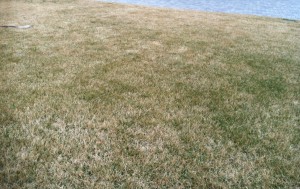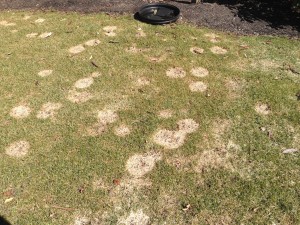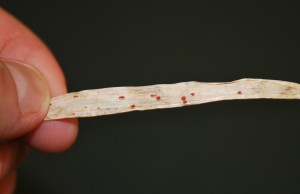Last week, the cats from John Deere had me up to the northern tier of NY for John Deere University and we had a blizzard! This week I was in Lake Placid with my friends at NYSTA and the morning temperature was something like -7°F. All I could think of was “How do I get winter speaking gigs in Florida instead of upstate NY?!”
Fortunately for New Jersey, the 20 inches of snow and sub-freezing temperatures I experienced in northern NY over the last couple weeks was simply a couple days at or near 50°F in concert with some snow-melting rain. After the big snow melt, the turfgrass quality seems pretty normal – lots of dormant grass that will green up in due time. On some sites, however, we are seeing gray snow mold. Gray snow mold is caused by the fungus Typhula incarnata and is pretty common in our area after long periods of snow cover.
So, how do you know you have snow mold and not just winter injury on your site? First things first, like almost all fungal disease agents, Typhula incarnata injures turf in patches. The patches are evident after the snow melts and can be a few inches to- several feet in diameter. Patches sometimes coalesce into larger nondescript areas of unthrifty (not dead) turf, which may confuse the issue. Look closely at the turf and you will find that the grass in diseased patches is matted down (lodged) and a whitish/gray mycelium will be evident between the leaf blades.
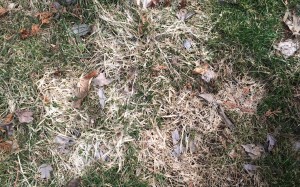
Gray snow mold patches coalesce into larger areas of unthrifty turf. Photo: Richard Buckley, Rutgers PDL
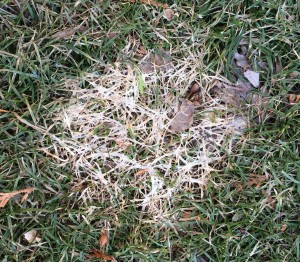
Gray snow mold. Note the matted leaf blades and traces of fungal mycelium. Photo: Richard Buckley, Rutgers PDL
Using your hand lens, a careful look at some of the blighted leaves will reveal small red (immature) to- brown (mature) sclerotia. Sclerotia are hardened masses of fungal mycelium. In some texts, gray snow mold is known as speckled snow mold due to the presence of these sclerotia. They are unique to turf diseases at this time of year and their presence is an excellent tool for field diagnosis of gray snow mold. Sclerotia are amazing in function as they will remain viable for several years until we (hopefully never) get another snowy winter.
Gray snow mold in golf turf is often accompanied by pink snow mold and generally requires preventive fungicide interventions. On landscape turf, however, we generally do not have to act preventively. Pink snow mold is rare in the landscape and the fungus that causes gray snow mold generally does not kill the plant. Most of the time, any blighted patches recover right along with all the other grass when the temperatures warm and dormancy breaks. Do what you can to speed up your green up, cultivate and seed any thin spots if you have to, and get on with your season!
